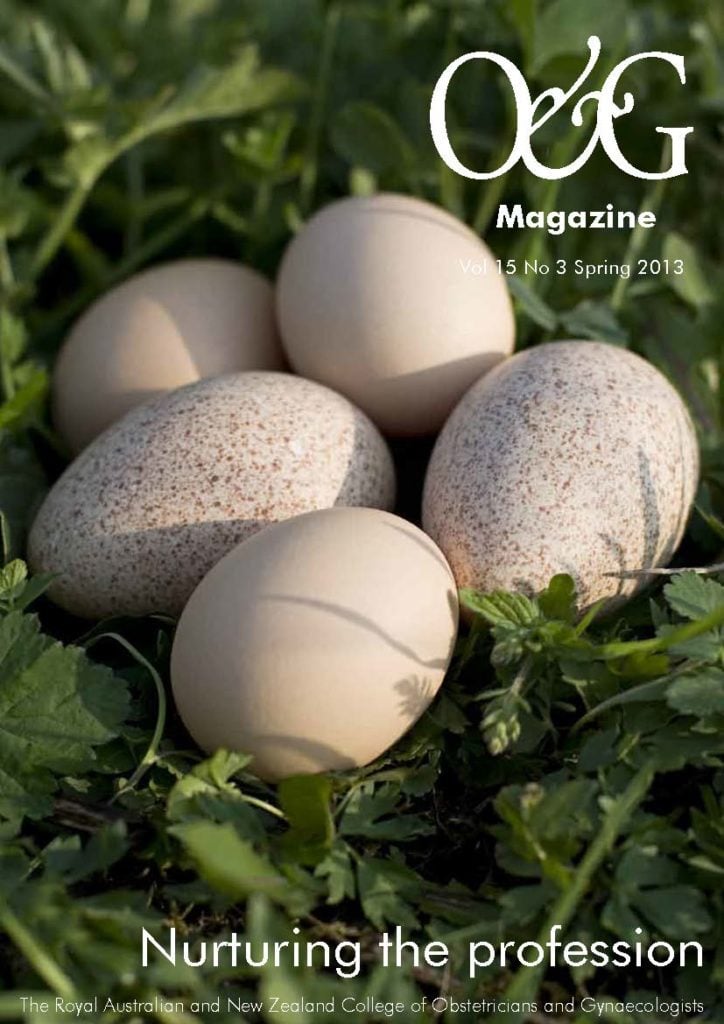In 2010–11, I was lucky enough to undertake training for the DRANZCOG Advanced at the Cairns Base Hospital. There are not enough positive adjectives in my vocabulary to describe this experience.
Cairns was the first place I was exposed to the reality of obstetrics and gynaecology; a specialty for which I have developed a great passion and which I now hope will be a large part of my life far into the future.
Cairns offers four places a year to potential Diplomates. The DRANZCOG Advanced takes 12 months to complete and equips doctors with skills in management of a birth suite, instrumental delivery, caesarean delivery and basic gynaecological procedures, such as dilatation and curettage. The DRANZCOG, that is the six-month option, is not offered. The reason for this preference for the DRANZCOG Advanced as opposed to the DRANZCOG qualification is that Cairns Base Hospital services an extensive area, from Cardwell to the Torres Straight and west to Weipa. Many of these communities are remote and transport of patients from them to Cairns can be both time consuming and expensive. It is therefore prudent to have several generalist doctors (including GPs and rural generalists), who are trained in O and G, placed in key communities throughout the region. Cairns Base Hospital is the obvious choice of facility in which to train these doctors.
The DRANZCOG Advanced trainees in Cairns Base Hospital, colloquially known as the obs and gynae principal house officers (PHOs), are responsible for the junior medical staffing of the birth suite on most shifts. While covering the birth suite, they are also on call for any woman with gynaecological emergencies who presents to the emergency department. Given the unique and diverse population that is served by Cairns Base Hospital, this means that PHOs are exposed to a wide range of clinical presentations, both gynaecological and obstetric.
As the PHOs are usually the first doctors with O and G expertise to see patients, the experience gained in managing emergencies is also substantial and invaluable. PHOs are rostered to elective caesarean lists; expected to conduct surgical management of miscarriage; and are asked to assist in more complicated procedures, such as laparoscopic salpingectomy for ectopic pregnancy. One of the aspects of DRANZCOG Advanced training in Cairns that I found the most valuable was the support from senior clinicians. The consultants were approachable and eager to teach.
As examples of the work done by GP obstetricians after completion of their DRANZCOG Advanced, there are currently at least three GP obstetricians on Thursday Island in the Torres Strait who owe their obstetric experience to Cairns Base Hospital. These doctors, along with a number who have trained elsewhere, including in South Africa, face the challenge of caring for the many women in the Torres Strait who become pregnant – a population in which obesity, gestational and pre-gestational diabetes, substance use, rheumatic heart disease, renal disease and domestic violence are more prevalent than in much of the rest of the country. They also treat and stabilise women suffering from evolving emergencies that are transferred from the southern reaches of Papua New Guinea.
One GP obstetrician related to me the story of needing to talk an Indigenous health worker on a remote island in the Torres Strait through a breech delivery on the telephone. The health worker had never so much as felt a cervix before, let alone conducted a complicated delivery. Tragically, the baby in that case died. However, there are many more stories in which the GP obstetricians on Thursday Island have saved the lives of both mother and baby.
Other centres where GP obstetricians are invaluable in the Far North Queensland (FNQ) area include Innisfail, Proserpine and Atherton. A number of graduates from the Cairns DRANZCOG Advanced program have gone on to work for the Royal Flying Doctor Service, where they provide much-needed women’s health outreach clinics as well as managing transfers of pregnant women and patients with gynaecological conditions. One Diplomate has gone on to be an instructor for the Advanced Life Support in Obstetrics (ALSO) course.
Of course, there are those of us who started the DRANZCOG qualification simply hoping to gain a better understanding of O and G, to better equip ourselves for a career in general practice, but ended up falling in love with the discipline so much so that we will never leave.
Perhaps the one negative aspect of my time in the O and G department in Cairns was the long working hours. This was sometimes gruelling, but it did mean that Trainees were able to pack a great deal of clinical experience into a single year. For more on this topic, please refer to the article written by my colleague Dr Michelle Harris (see page 28).






Leave a Reply